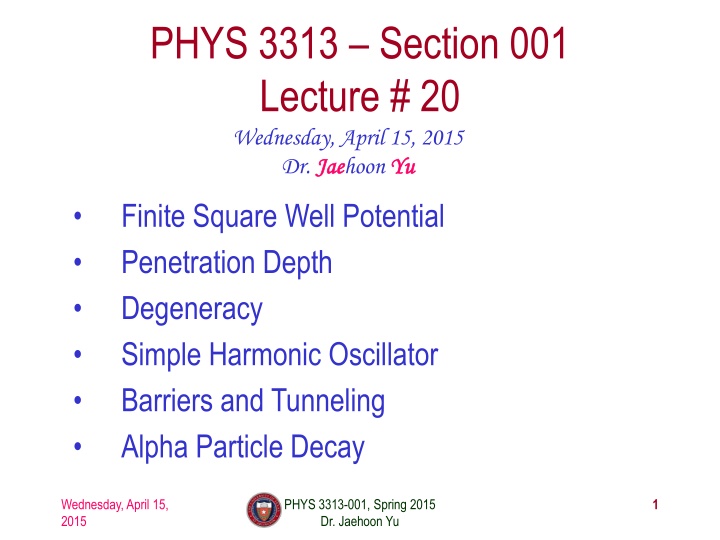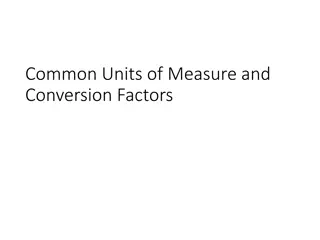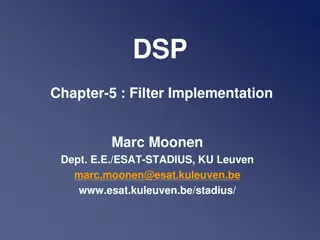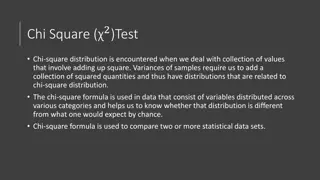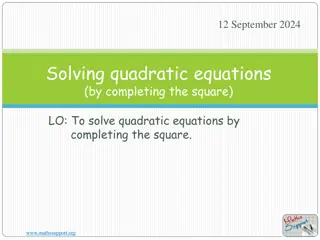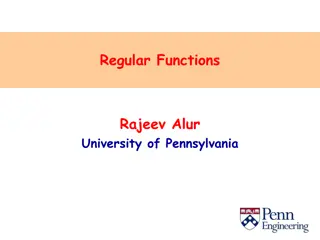Finite Square-Well Potential and Penetration Depth
The finite square-well potential in quantum mechanics is explored, discussing solutions inside and outside the well, penetration depth, and energy considerations. Learn about wave functions, boundary conditions, and the implications of penetration depth violating classical physics due to Planck's constant.
Download Presentation

Please find below an Image/Link to download the presentation.
The content on the website is provided AS IS for your information and personal use only. It may not be sold, licensed, or shared on other websites without obtaining consent from the author.If you encounter any issues during the download, it is possible that the publisher has removed the file from their server.
You are allowed to download the files provided on this website for personal or commercial use, subject to the condition that they are used lawfully. All files are the property of their respective owners.
The content on the website is provided AS IS for your information and personal use only. It may not be sold, licensed, or shared on other websites without obtaining consent from the author.
E N D
Presentation Transcript
PHYS 3313 Section 001 Lecture # 20 Wednesday, April 15, 2015 Dr. Jae Jaehoon Yu Yu Finite Square Well Potential Penetration Depth Degeneracy Simple Harmonic Oscillator Barriers and Tunneling Alpha Particle Decay Wednesday, April 15, 2015 PHYS 3313-001, Spring 2015 Dr. Jaehoon Yu 1
Announcements Research paper deadline is Monday, May 4 Research presentation deadline is Sunday, May 3 Homework #5 CH6 end of chapter problems: 34, 39, 46, 62 and 65 Due Wednesday, Apr. 22 Reading assignments CH7.6 and the entire CH8 Bring out the special project #5 No Colloquium today Wednesday, April 15, 2015 PHYS 3313-001, Spring 2015 Dr. Jaehoon Yu 2
Wednesday, April 15, 2015 PHYS 3313-001, Spring 2015 Dr. Jaehoon Yu 3
Finite Square-Well Potential The finite square-well potential is V0x 0, 0 0 < x < L V0x L V x ( )= The Schr dinger equation outside the finite well in regions I and III is 2 1 y d2y dx2=a2y d2y dx2= E -V0 ( ) ( ) for regions I and III, or using - a2= 2m V0-E 2 2m yields form e x and e- x. In the region x > L, we reject the positive exponential and in the region x < 0, we reject the negative exponential. Why? . The solution to this differential has exponentials of the yIx ( )= Aeax region I, x <0 yIIIx ( )= Ae-ax region III, x > L This is because the wave function should be 0 as x infinity. Wednesday, April 15, 2015 PHYS 3313-001, Spring 2015 Dr. Jaehoon Yu 4
Finite Square-Well Solution Inside the square well, where the potential V is zero and the particle is free, the d2y dx2= -k2y wave equation becomes where k = 2mE 2 Instead of a sinusoidal solution we can write yIIx ( )=Ceikx+ De-ikx region II, 0<x < L The boundary conditions require that yI=yII at x = 0 and yII=yIII at x = L and the wave function must be smooth where the regions meet. Note that the wave function is nonzero outside of the box. Non-zero at the boundary either.. What would the energy look like? Wednesday, April 15, 2015 PHYS 3313-001, Spring 2015 Dr. Jaehoon Yu 5
Penetration Depth The penetration depth is the distance outside the potential well where the probability significantly decreases. It is given by dx 1 a= 2m V0- E ( ) It should not be surprising to find that the penetration distance that violates classical physics is proportional to Planck s constant. Wednesday, April 15, 2015 PHYS 3313-001, Spring 2015 Dr. Jaehoon Yu 6
Three-Dimensional Infinite-Potential Well The wave function must be a function of all three spatial coordinates. p2 2m+V We begin with the conservation of energy Multiply this by the wave function to get E = K+V = y = p2 2my +Vy p2 2m+V Ey = Now consider momentum as an operator acting on the wave function. In this case, the operator must act twice on each dimension. Given: y y y z y x pyy = -i p2= px 2+ py 2+ pz pzy = -i 2 pxy = -i The three dimensional Schr dinger wave equation is 2y x2+ 2y z2 +Vy = Ey y2+ 2y 2 2 - - 2m 2y +Vy = Ey Rewrite 2m Wednesday, April 15, 2015 PHYS 3313-001, Spring 2015 Dr. Jaehoon Yu 7
Ex 6.10: Expectation values inside a box Consider a free particle inside a box with lengths L1, L2 and L3 along the x, y, and z axes, respectively, as shown in the figure. The particle is constrained to be inside the box. Find the wave functions and energies. Then find the ground energy and wave function and the energy of the first excited state for a cube of sides L. What are the boundary conditions for this situation? Particle is free, so x, y and z wave functions are independent from each other! Each wave function must be 0 at the wall! 2 2m 2y +Vy = Ey A reasonable solution is Inside the box, potential V is 0. 2 - - 2m 2y = Ey ( )sin k2y ( )sin k3z ( ) y x,y,z ( Using the boundary condition )= Asin k1x y = 0 at x = L1 k1L1= n1p So the wave numbers are k1= n1p L1 k1=n1p k2=n2p k3=n3p L1 L2 L3 Wednesday, April 15, 2015 PHYS 3313-001, Spring 2015 Dr. Jaehoon Yu 8
Ex 6.10: Expectation values inside a box Consider a free particle inside a box with lengths L1, L2 and L3 along the x, y, and z axes, respectively, as shown in figure. The particle is constrained to be inside the box. Find the wave functions and energies. Then find the round energy and wave function and the energy of the first excited state for a cube of sides L. The energy can be obtained through the Schr dinger equation 2 2m 2y = y = Ey ( 2 x2+ 2 y2+ 2 2 - - z2 2m y x= 2y x2= 2 ( )= )sin k2y ( )sin k3z ( ) ( )sin k2y ( )sin k3z ( ) k1Acos k1x Asin k1x x ( )= ( )sin k2y ( )sin k3z ( )= -k1 ( )sin k2y ( )sin k3z ( ) -k1 2y 2Asin k1x x2Asin k1x 2 x2+ 2 ( y = )= y2+ 2 2 2 ( )y = Ey - What is the ground state energy? E1,1,1 when n1=n2=n3=1, how much? 2+k2 2+k3 2 k1 z2 2m 2m 2 p2 2m 2 2 2+n2 2 2+n3 2 n1 L1 When are the energies the same for different combinations of ni? E = 2+k2 2+ k3 2 k1 2m 2 L2 L3 Wednesday, April 15, 2015 PHYS 3313-001, Spring 2015 Dr. Jaehoon Yu 9
Degeneracy* Analysis of the Schr dinger wave equation in three dimensions introduces three quantum numbers that quantize the energy. A quantum state is degenerate when there is more than one wave function for a given energy. Degeneracy results from particular properties of the potential energy function that describes the system. A perturbation of the potential energy, such as the spin under a B field, can remove the degeneracy. *Mirriam-webster: having two or more states or subdivisions Wednesday, April 15, 2015 PHYS 3313-001, Spring 2015 Dr. Jaehoon Yu 10
